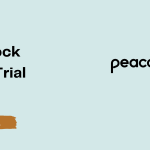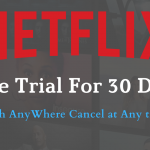Nowadays, almost everyone may be familiar with Peacock, a platform that provides online streaming services. Whether you've missed out on your favorite show or want to catch up on the latest series, Peacock TV is the perfect place to stream it all. Do you know whether the company offers you a free trial? Definitely. Peacock's streaming service has recently attracted … [Read more...] about Peacock Free Trial 2024 – Exclusive 7 Days
YouTube TV Free Trial 2024: (Exclusive 14-Days Trial Offer)
Are you still figuring out how to claim the YouTube TV free trial? If so we have got your back. The race for cable TV entertainment has turned into a race for streaming services. In the expansive digital age, almost everyone is investing in streaming service apps like YouTube TV, Netflix, etc. Many popular providers such as Netflix, Disney, and Apple are among the top … [Read more...] about YouTube TV Free Trial 2024: (Exclusive 14-Days Trial Offer)
Netflix Free Trial 2024: Is It Still Available?
Good day, guys! Are you looking forward to experiencing a Netflix trial? It is only possible once you sign up for the first time with Netflix. Netflix is becoming hugely popular in the U.S. and other countries across the world. It is well known for its quality content at a cheap price. Netflix is offering its new customers a free trial for one month. It is indeed surprising … [Read more...] about Netflix Free Trial 2024: Is It Still Available?
Masterclass Free Trial 2024 – All Access Pass
Still, figuring out how to claim the Masterclass Free Trial? Well, we have got your back. Learning is a process that never ends. As we go through phases of our life, we learn so many things, and I feel we must keep learning till we live. The scope of learning is so broad that if we keep learning something new every day, we will still have a lot to learn. Are you looking … [Read more...] about Masterclass Free Trial 2024 – All Access Pass
Audible Free Trial 2024 — Exclusive One Month Trial Offer
Are you looking to claim the Audible free trial? Well, we have got your back. You can opt for Audible and get to listen to those books & tales on the go! So, if you wish to know more about Audible Free Trial, this article will help you. Audible is an app developed and marketed by Amazon. It has a collection of approximately 200,000 different audiobooks. There are … [Read more...] about Audible Free Trial 2024 — Exclusive One Month Trial Offer





